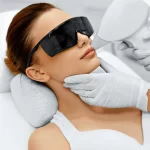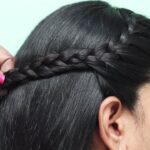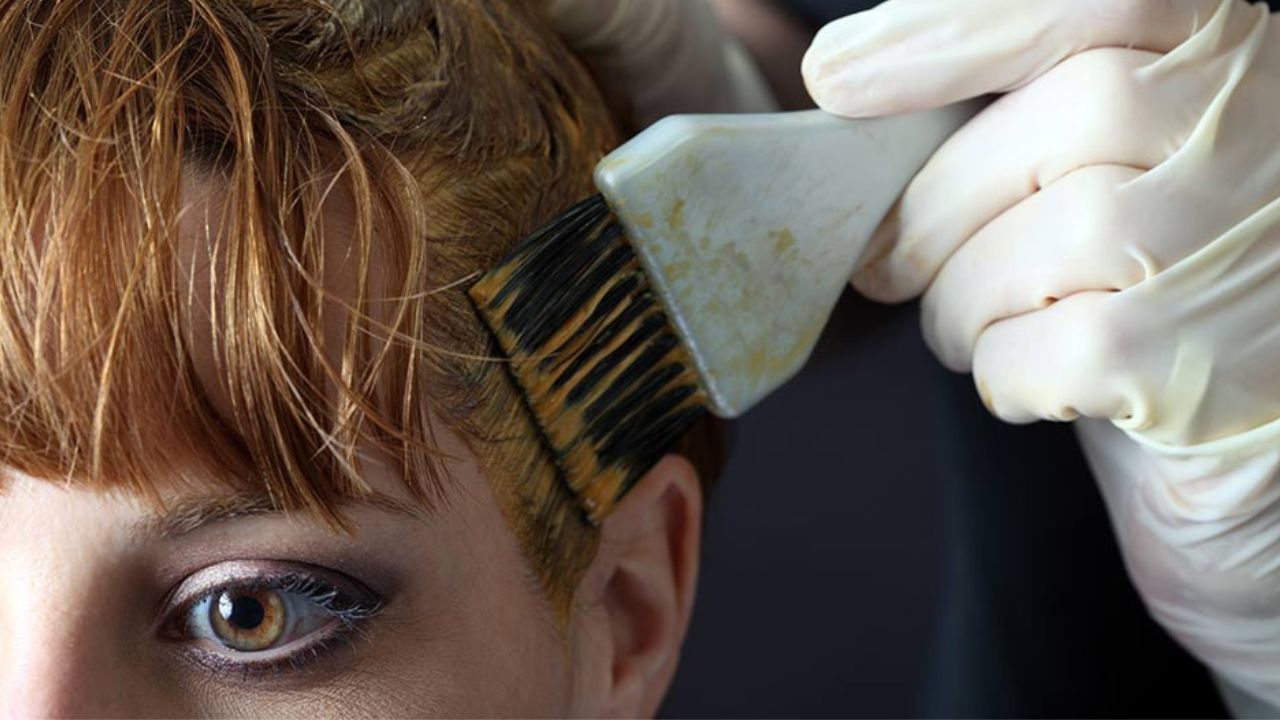What You Need to Know Before Your Next Salon Visit
Transforming your hair color can be a thrilling experience, adding a dash of excitement to your style. However, it’s vital to pause and consider the less glamorous side of hair dyeing – the potential damage caused by the chemicals involved. Before you book your next color appointment, let’s dive into the hidden truths of hair dyeing and how to smartly navigate its potential pitfalls. Trust us, your locks will thank you later for this insightful read!
Understanding the Different Hair Dyes: Choose Wisely!
Permanent Hair Dyes: These are the go-getters of the hair color world. They delve deep into your hair, changing color from the inside out. Their secret? Ammonia, which alters your hair’s pH and paves the way for color to seep into the hair shaft. Keep in mind, a touch-up every three months is a must to maintain that vibrant look.
Semi-Permanent Hair Dyes: Think of these as your hair’s casual friends. They mingle around the outer layer of the hair shaft, occasionally dipping into the cortex. The result? A more subtle color change that’s kinder to your hair.
Temporary Hair Dyes: These are the commitment-phobes of hair colors. Sitting on your hair’s surface, they provide a quick color fix that washes out in a few weeks. Perfect for those who love to experiment without the long-term relationship.
Bleach: The alchemist of hair color. Bleach strips your hair of its natural pigment, lightening dark hues to make way for vibrant blondes and fiery reds. It’s a process that demands respect and care.
Ammonia-Free Hair Dyes: The gentle souls in the hair dye family. Often referred to as demi-permanent, these dyes forego ammonia and instead, use ingredients like hydrogen peroxide to tenderly change your hair’s color. They’re less harsh, making them a friendlier option for your tresses.
By understanding the types of hair dyes and their impact, you can make informed decisions that not only bring out the best in your hair but also ensure its health and vitality in the long run.
Navigating the Choppy Waters of Hair Dyeing: Understanding the Side Effects
Dyeing your hair can feel like a chemistry experiment, combining pigments, peroxide, and ammonia in an intricate dance. It’s a world of vibrant possibilities, but it’s not without its pitfalls. Let’s unpack the potential side effects of hair dyeing – particularly with permanent dyes – so you can make informed choices for your luscious locks.
The Perils of Over Processing
In the realm of permanent hair colours, ingredients like ammonia and peroxide are standard. These chemicals pry open your hair shaft, paving the way for colour transformation. However, this process isn’t just a colour change; it’s a form of hair damage. Excessive dyeing can strip your hair of its natural sheen, leading to brittleness and, in severe cases, hair that breaks off or washes away. While certain hair care treatments can resuscitate overly treated hair, sometimes a haircut is the only cure for severe damage.
Alert: Allergic Reactions
Allergies to hair dye, particularly due to a compound called paraphenylenediamine (PPD), are not uncommon. Those with skin conditions like eczema or psoriasis, or contact dermatitis, might find themselves more susceptible to reactions. It’s not just about itching and scalp irritation – in some instances, it can lead to swelling or even chemical burns. Remember, just because you haven’t had a reaction before doesn’t mean you’re immune forever. The more you dye, the greater the risk becomes.
A Question Mark Over Fertility
Here’s where the waters get murky: the impact of hair dyes on fertility and pregnancy. Research offers mixed insights, but the suggestion of a risk, however minimal, prompts caution. If you’re planning to conceive or are already pregnant, it might be prudent to steer clear of hair dyes.
The Demands of Upkeep
Maintaining dyed hair is no walk in the park – it’s a commitment. Regular salon visits for touch-ups, investing in specially formulated products, and the need for extra hair care can be daunting. Neglect in these areas can lead to hair that’s lacklustre and unhealthy.
Conjunctivitis: A Cautionary Tale
When dyeing your hair, precision is key. A slip-up can lead to chemicals contacting sensitive areas like your eyes, potentially causing conjunctivitis or other inflammations. This is a reminder of the importance of careful application.
Asthma: A Serious Concern
Regular exposure to hair dye chemicals can trigger respiratory issues. Symptoms might range from coughing and throat discomfort to full-blown asthma attacks. While modern dyes have phased out some carcinogenic compounds, the ongoing debate about the link between hair dye and cancer underscores the need for continued research and caution.
Understanding these potential side effects is crucial for anyone considering hair dyeing. It’s not just about a new hue – it’s about caring for the health and wellbeing of your hair and body. With this knowledge, you can make choices that align with your beauty goals and your health priorities.
Your Guide to Safer Hair Dyeing: A Balance Between Beauty and Health
Exploring the world of hair color can be an exhilarating journey, but it’s vital to tread carefully to avoid the pitfalls. Here’s a comprehensive guide to minimize the risks and embrace the joys of hair dyeing safely.
Opting for Gentler Alternatives
- Choose Semi- or Demi-Permanent Colors: These products typically have fewer harsh chemicals compared to permanent dyes, reducing the risk of damage and allergic reactions.
- Natural Dye Alternatives: Experiment with coffee, tea, food coloring, beet and carrot juice, henna, or lemon and honey for more subtle, less harmful coloring options.
Conducting Essential Tests
- Patch and Strand Tests: Always perform a patch test to check for allergies and a strand test to ensure your hair can withstand the dyeing process without significant damage.
Professional Assistance
- Seek a Professional: A trusted hair colorist can provide expertise and reduce the likelihood of mistakes and excessive damage.
Environment Matters
- Well-Lit and Ventilated Space: Coloring in an area with good lighting and ventilation can prevent eye and nasal irritation.
Quality over Cost
- Invest in Trusted Brands: Even if it costs more, opt for products with fewer harmful chemicals from reputable brands.
Dyeing Frequency
- Limit Coloring Sessions: The less frequently you dye your hair, the lower the risk of damage. Consider your hair’s condition and invest in nourishing treatments between dyeing sessions.
Caution with Heat Tools
- Avoid Excessive Heat Styling: Heat can accelerate color fading and increase hair damage.
Understanding the Risks and FAQs
Side Effects of Hair Dye:
- Physical Reactions: Risks include allergic reactions (skin irritation, redness), conjunctivitis, and in severe cases, respiratory issues like asthma.
- Hair Health: Overuse can lead to breakage, split ends, dryness, and even hair loss.
- Other Concerns: Headaches, nausea, and in very rare cases, chronic health issues due to certain chemicals.
Frequently Asked Questions:
Can Dyeing Hair Cause Gray Hair?
No, dyeing doesn’t cause graying. However, excessive chemical treatment can lead to dull, brittle hair.
How Does Hair Dye Affect the Kidneys?
Certain chemicals in hair dyes (like resorcinol, lead acetate) could contribute to kidney issues, although this is generally rare and linked to prolonged, excessive exposure.
Can Hair Dye Come Out in Urine?
No, hair dye does not typically appear in urine.
Embracing hair color changes should be an enjoyable and safe process. By taking these precautions, you can explore different hues and styles while maintaining the health and integrity of your hair. Remember, beauty is not just about the color of your tresses, but also their health and vibrancy.









